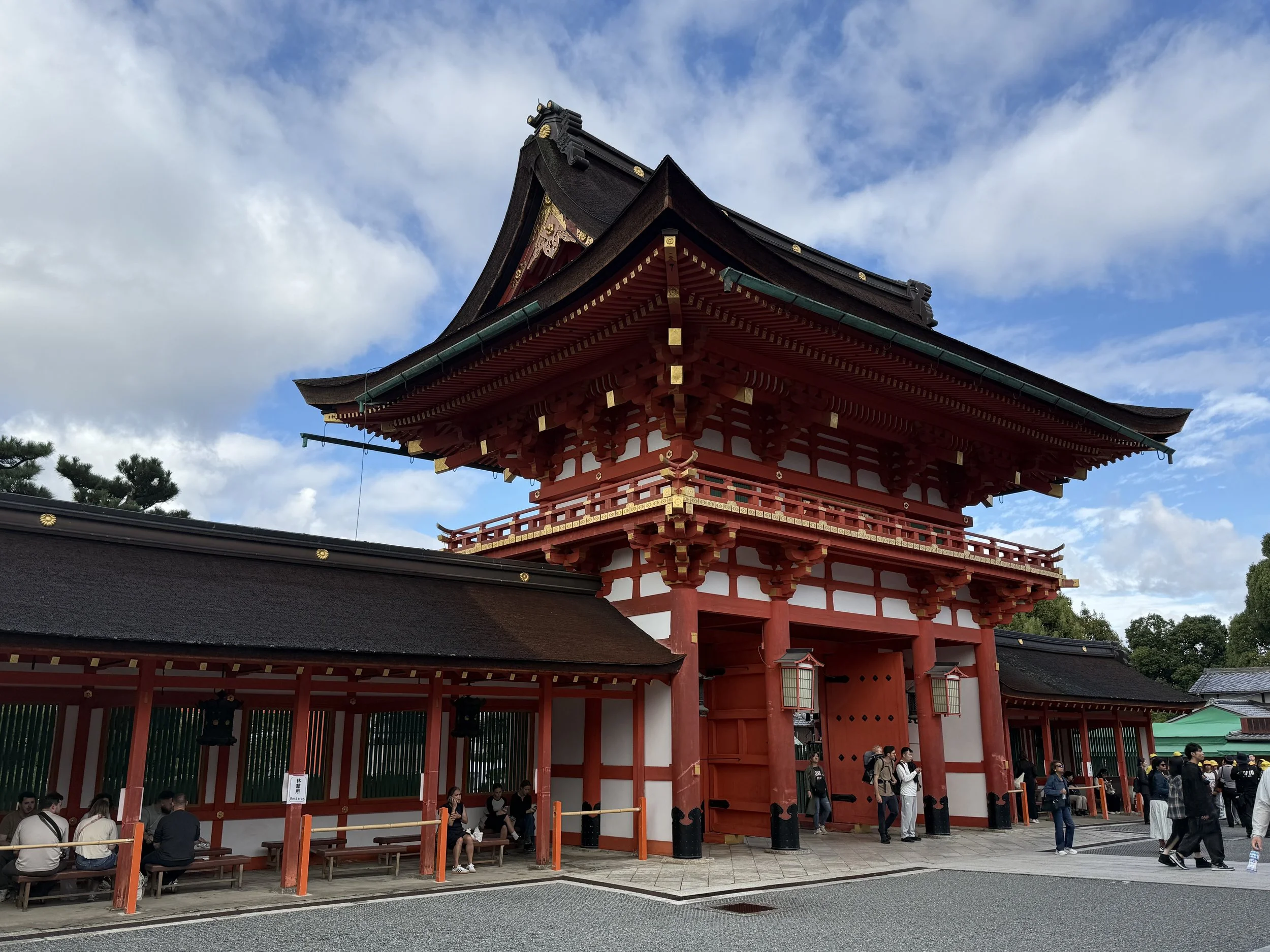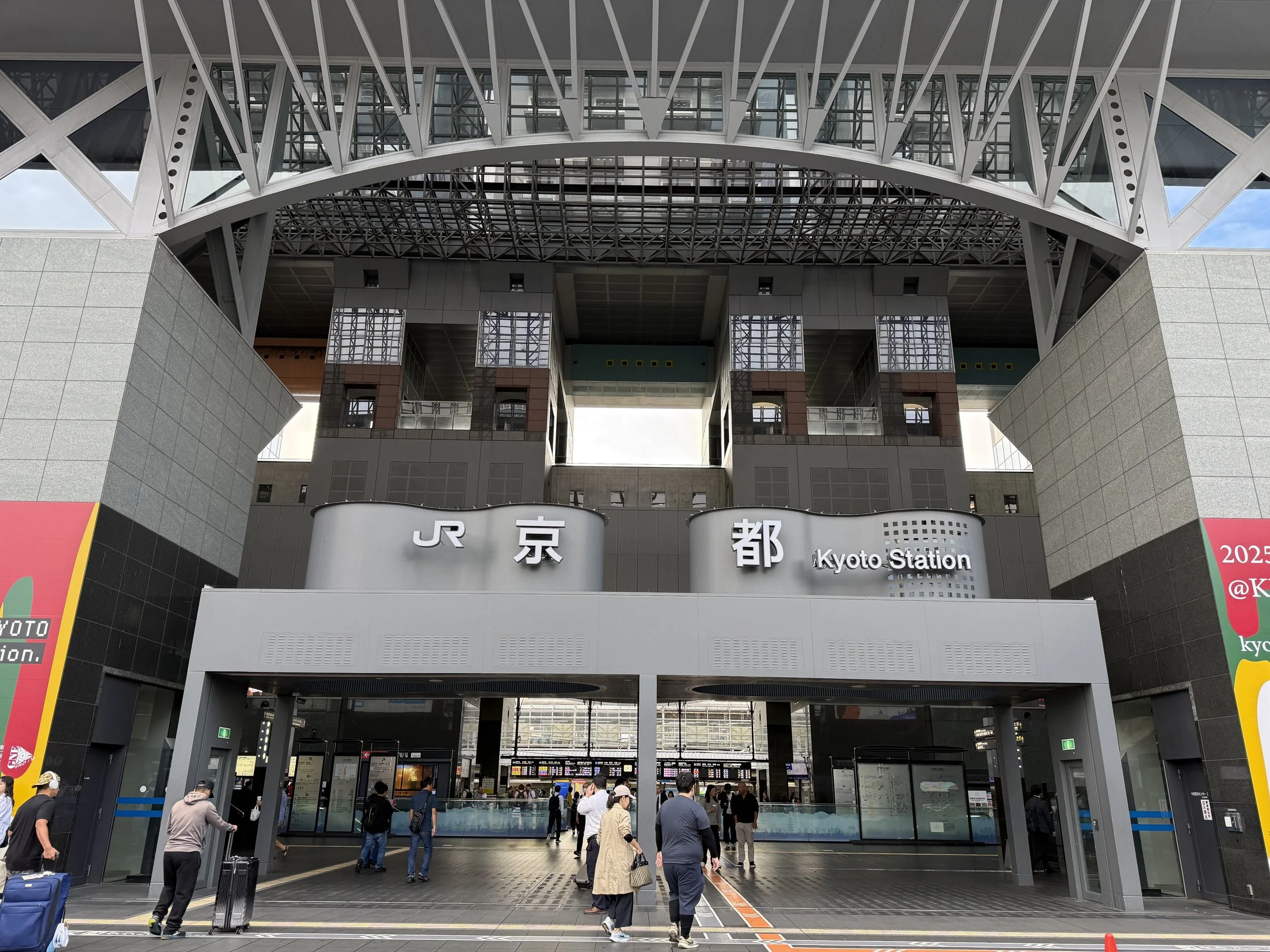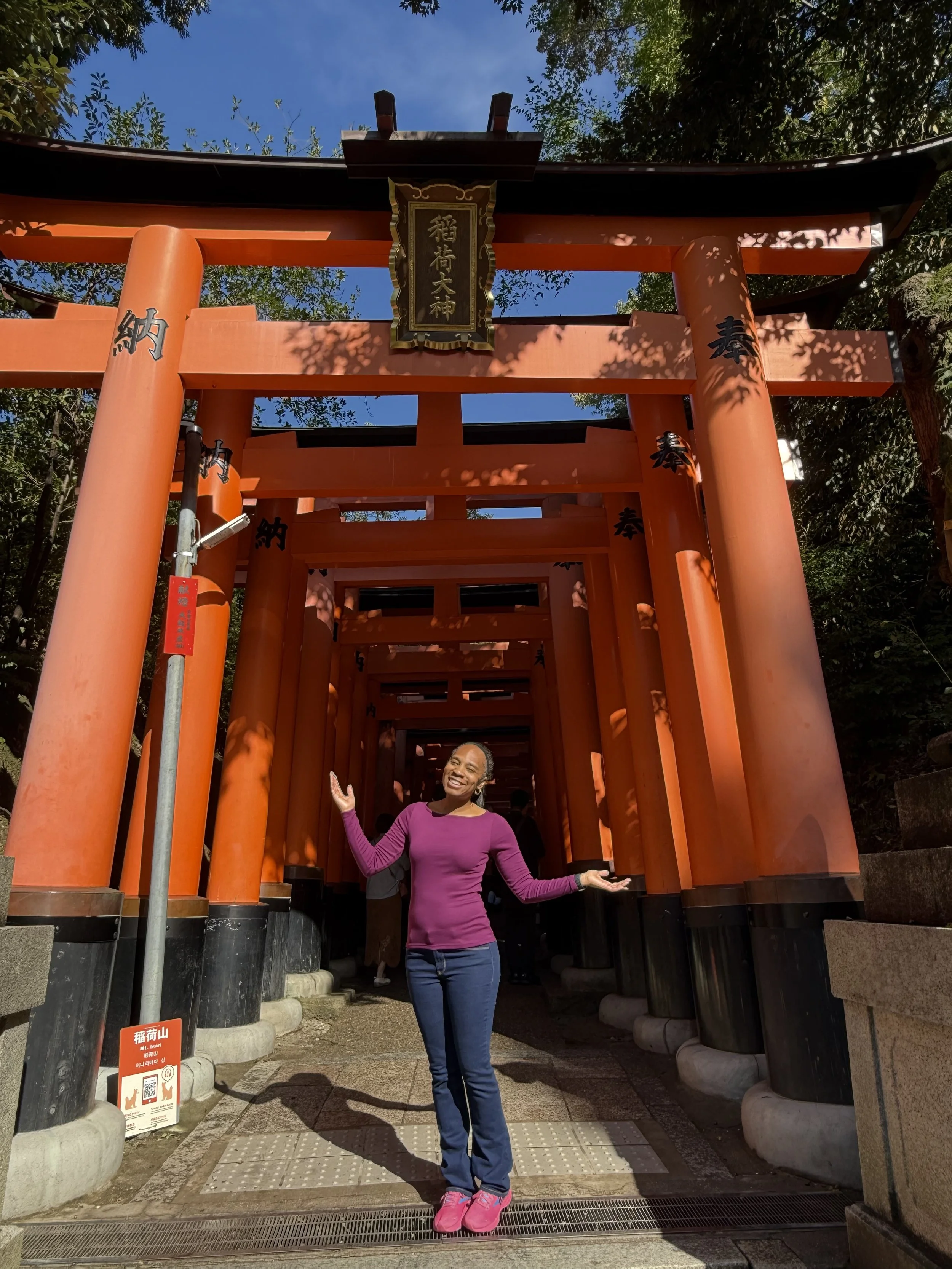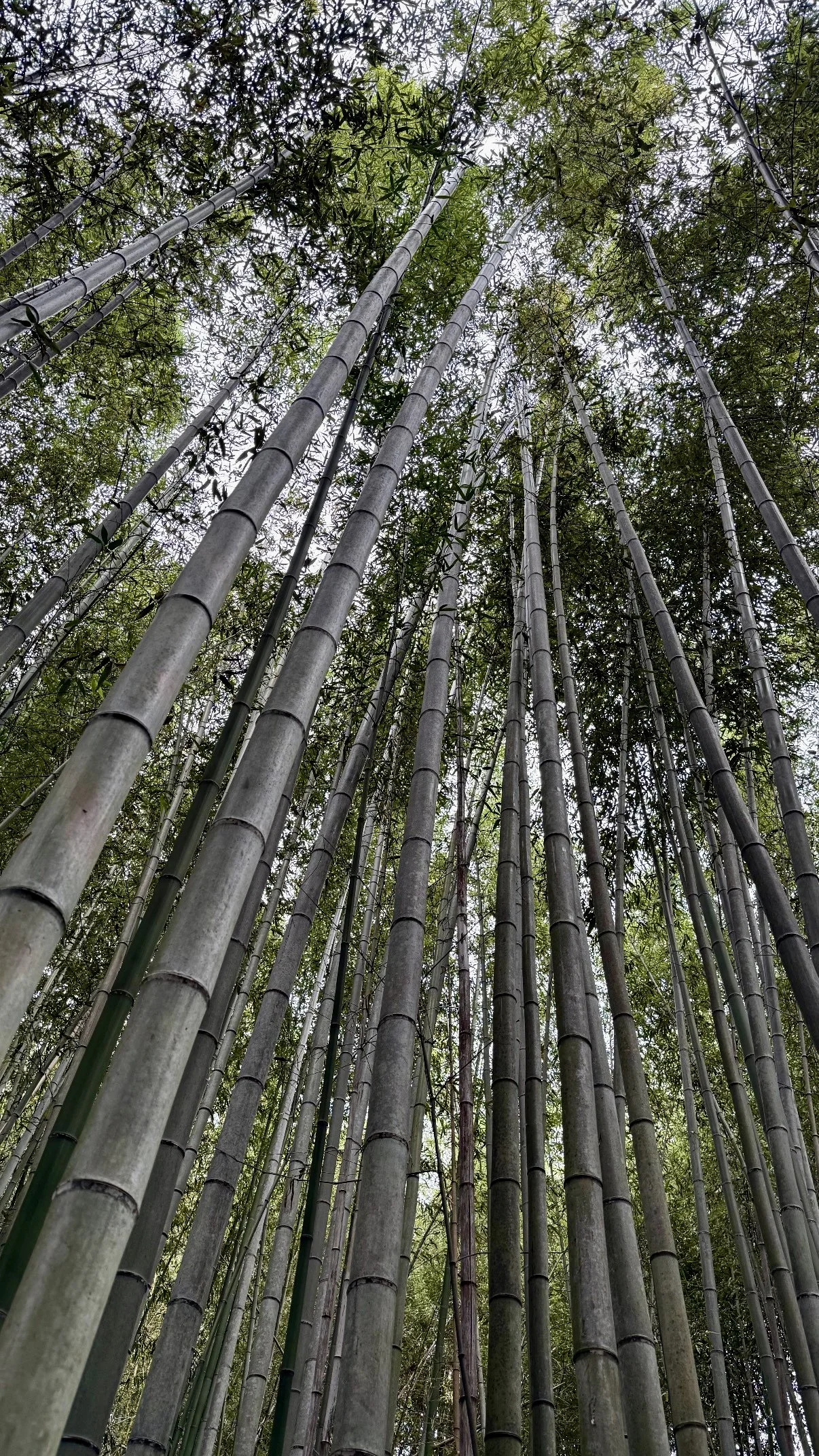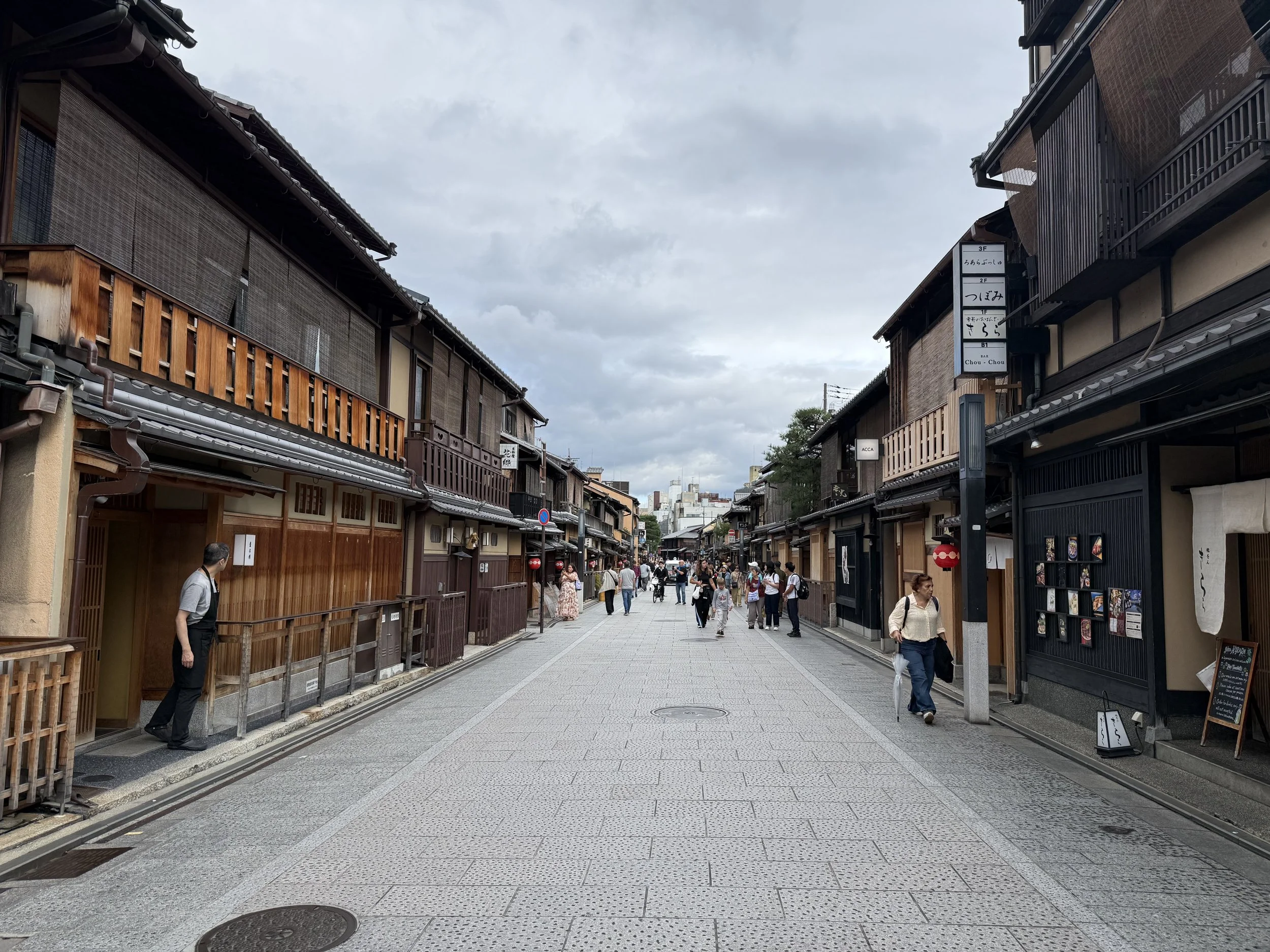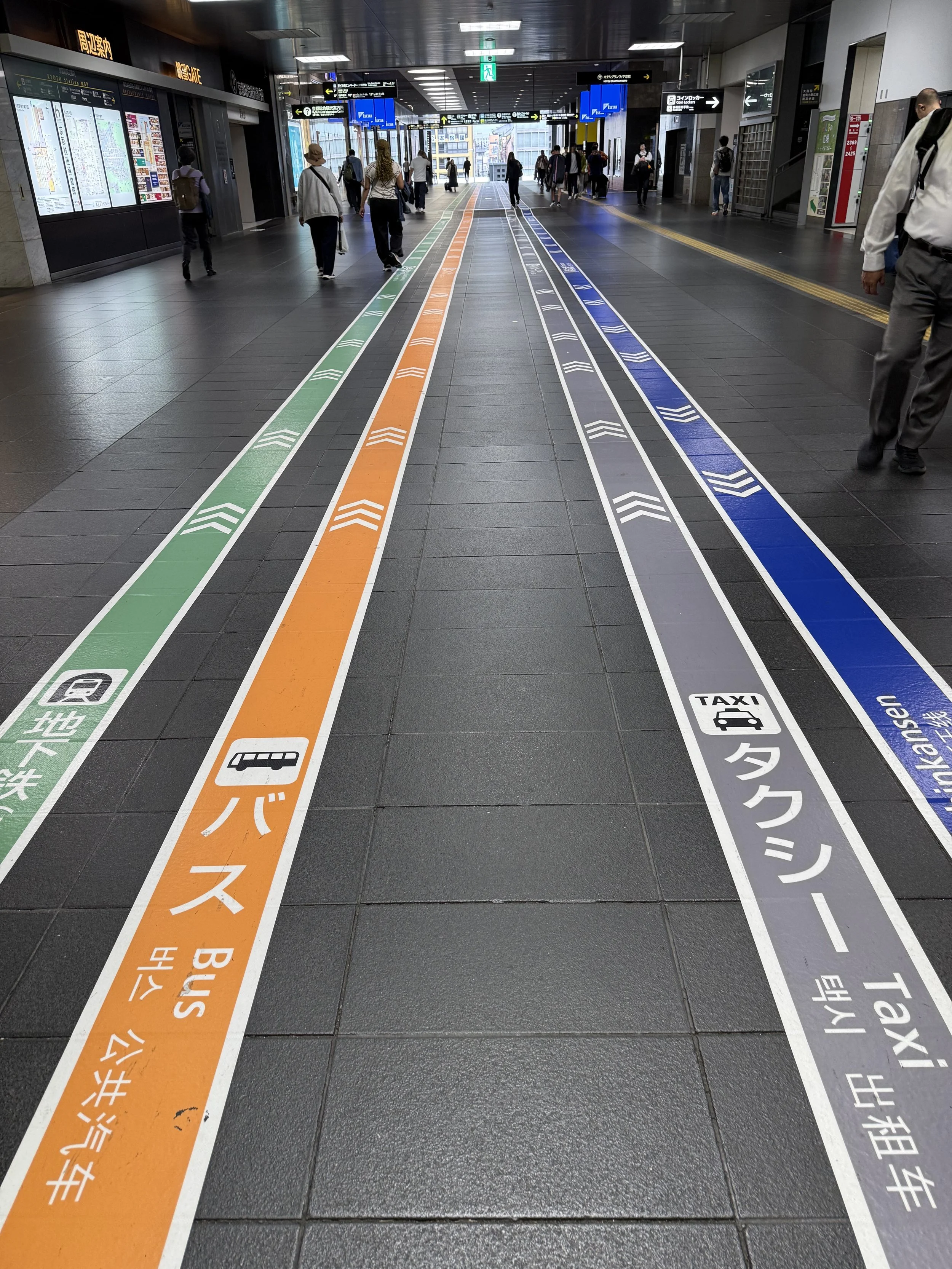Kyoto, Japan
The day started early in Osaka, around 5:45 a.m. There were only two cabs outside the port when we arrived, and I chose the one that had the most personality. The silver car looked like something between a taxi and a street racer, its wheel arches wrapped in flaming skull decals.
Inside, the dashboard was crowded with GPS units, cameras, and gauges. A large red “A” emblem was fixed to the ceiling, framed by flame decals, and surrounded by stickers pressed onto nearly every corner of the driver’s side.
The driver was a Japanese man who looked to be in his fifties and clearly enjoyed personalizing his car. He spoke at times, sometimes to us, sometimes to himself, in that half-mumbled way that leaves you unsure if you are meant to answer. His tone was pleasant though, and there was an easy kindness to him. He navigated Osaka’s busy streets with precision and got us to Osaka Station right on time.
Getting to Kyoto
After grabbing a quick snack, we made our way to the platform to catch the JR Tokaido Shinkansen to Kyoto. A one-way ticket between Osaka and Kyoto costs around 1,420 yen (about 9 USD) for an unreserved seat. The ride takes about fifteen minutes. As usual, it left right on time, and we arrived just a few minutes later.
Once there, I followed the signs through the massive Kyoto Station to ground level, where we were scheduled to meet our tour guide. She was running a little late due to local train delays, but she arrived soon after.
We purchased ICOCA cards, rechargeable IC cards used throughout the Kansai region. The card costs 2,000 yen, which includes a 500-yen deposit and 1,500 yen in usable credit. It can be used on local trains, subways, and buses, and even at convenience stores and vending machines.
The platform was already overflowing with people. Another delay had caused a buildup of commuters, and given our time constraints, our guide decided it would be faster to take a taxi to our first stop.
Fushimi Inari Taisha
Our first destination was Fushimi Inari Taisha, one of Kyoto’s most famous Shinto shrines and the head shrine of more than 30,000 Inari shrines across Japan. Founded in 711, it sits at the base of Mount Inari and is dedicated to Inari, the Shinto god of rice, agriculture, and prosperity.
Fox statues (kitsune) are scattered across the grounds. They are said to be messengers of the deity and often hold symbolic keys or scrolls in their mouths.
The shrine’s most recognizable feature is its tunnel of vermilion torii gates, each donated by individuals or businesses as a prayer for success. The full trail winds up Mount Inari, which rises about 233 meters, and takes roughly two hours to complete.
Hours: Open 24 hours a day
Admission: Free
We visited early, when it was busy but not overcrowded. We walked through the temple grounds and followed the first few sections of the gate path before exiting. Even that short walk gave a clear sense of the shrine’s beauty and its deep connection to Japan’s cultural identity.
Arashiyama Bamboo Forest
From there, we took a train to the Arashiyama Bamboo Forest in western Kyoto. The bamboo stalks towered overhead, some reaching nearly twenty meters high. The path stretched for several hundred meters, curving through the dense greenery.
Visitors can also explore by rickshaw, known locally as jinrikisha. The red and black rickshaws are pulled by men in traditional running gear and have been part of the area’s culture since the Meiji era. Rides start at around 5,000 yen (about 33 USD) for two people for 10–12 minutes, though longer routes cost more.
I’ll tell you this, every one of those rickshaw operators was in phenomenal shape. They were quite pleasant to look at.
My first impression on arriving at the forest was, “Wow, there are a lot of people here to look at bamboo.” The air smelled clean, and the sound of the wind rustling through the bamboo was calming, even with the crowds that had gathered by midmorning.
The forest is part of Japan’s list of “100 Soundscapes”, recognized for how its natural sounds reflect the country’s cultural appreciation of nature.
Hours: Open 24 hours
Admission: Free
Arriving early in the morning is the best way to experience it with fewer people.
Gion District
By eleven we needed to leave the group to stay on schedule, so we caught a cab to Gion, Kyoto’s well-known geisha district. Stretching between the Kamo River and Yasaka Shrine, Gion is a maze of narrow streets lined with old wooden townhouses called machiya and small teahouses where geiko and maiko still perform.
People in colorful rental kimonos strolled past, stopping for photos in front of traditional storefronts. We didn’t dress up, but we spent time browsing the shops and watching the movement of the crowd.
Gion began centuries ago as a stop for pilgrims visiting Yasaka Shrine and has managed to preserve much of its traditional character even as modern tourism has grown. Some areas are now closed to non-residents because of overcrowding and issues with tourists following or photographing geisha without permission.
Return to Osaka
Around one in the afternoon, we headed back to Kyoto Station. The return cab was another memorable one. The driver had flash cards with common travel phrases and a sign that said, “I do not speak English, Korean, or Chinese.”Communication was a mix of pointing, smiling, and polite nods, but he got us back to the station without a problem.
We caught the bullet train back to Osaka and then transferred to the local line that returned us to the cruise port. Before heading back to the ship, I stopped by the Osaka Aquarium Kaiyukan to take a closer look at the building’s striking exterior, shaped like a giant glass wave. What stood out most was the massive image of a whale shark on the front of the building, a nod to the aquarium’s most famous resident.
Admission: 2,700 yen (about 18 USD) for adults
After visiting the aquarium, I headed back to the ship. It was a good day.
Other Things to Do in Kyoto
We were supposed to visit Kinkaku-ji (The Golden Pavilion) but ran out of time. The temple is one of Kyoto’s most iconic landmarks. Its top two floors are covered in gold leaf, reflecting beautifully on the surface of the surrounding pond.
Hours: 9 a.m. – 5 p.m. Admission: 500 yen per adult
Kiyomizu-dera Temple – Famous for its wooden stage overlooking the city (entry 400 yen)
Nishiki Market – A narrow food market filled with local specialties and souvenirs
Philosopher’s Path – A quiet stone walkway lined with cherry trees, especially popular in spring

